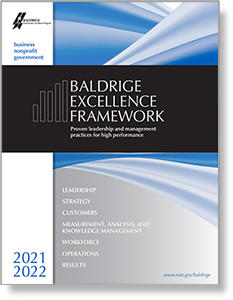Blogrige
The Official Baldrige Blog

Okay, I am a chemist!
For the rest of the world, it is called super glue. For me it has been my "silver bullet" this past week. We all hope for that silver bullet that will solve all our problems.
I'll share my story shortly, but maybe a little context first. The term silver bullet originated in 1806 according to the Merriam-Webster Dictionary and is defined as, "something that acts as a magical weapon; especially one that instantly solves a long-standing problem." For me, the term was introduced in the 1950's by the Lone Ranger, who always left behind a silver bullet as a symbol of his correction of an injustice. Other famous characters have also had their silver bullets; for example, many of us will remember Windex as the magic cure for all ills in My Big Fat Greek Wedding.
Super glue has been my constant companion this past week. In one week, I have used super glue to:
- glue an art glass earring to its post for my wife
- glue a metal contact to the plastic cover of my computer mouse, when the plastic clip holding it in place broke
- glue a hook to the tile wall in our bathroom, when other adhesives failed
- glue a loosened edge protector to my car door, and
- glue a hook to the back of a picture frame when the tiny nail came out and was lost.
While super glue sure appeared to be a magic cure for these challenges, we all know that there are no universal silver bullets.
Yet in life and in leading or managing organizations we still keep hoping for that silver bullet! I hesitate to think of the many times I have sat at a Baldrige conference and had an audience member ask each of the Baldrige Award recipients what key change led to their becoming a high-performing, role model organization. The recipients always respond with the process changes and key cultural attributes that led to their success, emphasizing that there is no single, magical silver bullet. Yet year after year the question persists. We all want to lead and work for great organizations. And the truth is it takes dedication and hard work to be a great organization. Of course, being a great organization is oh so rewarding for all stakeholders.
A three-prong approach to striving for excellence
With the new year upon us, let me offer no silver bullets, but a proven three-prong approach to striving for excellence:
- Have clear organizational mission, vision, and values.
Have a clear understanding of what your organization is trying to accomplish (mission). Have a clear perception and statement of the organization's desired future (vision). And have a clear statement of the guiding principles and behaviors that embody how your organization and its people will, and do, operate (values).
- Practice visionary and ethical senior leadership.
The senior leaders of your organization need to set and deploy your vision and values. They must communicate openly, create an environment for success, and focus on action (item 1.1 in the Baldrige Criteria for Performance Excellence).
- Ask the right questions and listen to the answers.
Being open to and seeking input leads to better decisions and shows that you value the contributions of all key stakeholders (managers, employees, customers, Board members, and other key stakeholders). Ask yourself and others the questions that are important to organizational performance. A good guide is the Baldrige Excellence Builder and its questions. If you need fewer questions to get you started, consider these three:
• Is your organization doing as well as it could or should?
• How do you know (what data do you use)?
• Analyzing the data, what should you change or improve?
The start of a new year is a great time for a renewed beginning focused on achieving performance excellence. I wish you high energy, clear vision, and a commitment to action!

Baldrige Excellence Framework
The Baldrige Excellence Framework has empowered organizations to accomplish their missions, improve results, and become more competitive. It includes the Criteria for Performance Excellence, core values and concepts, and guidelines for evaluating your processes and results.
Purchase your copy today!
Available versions: Business/Nonprofit, Education, and Health Care





